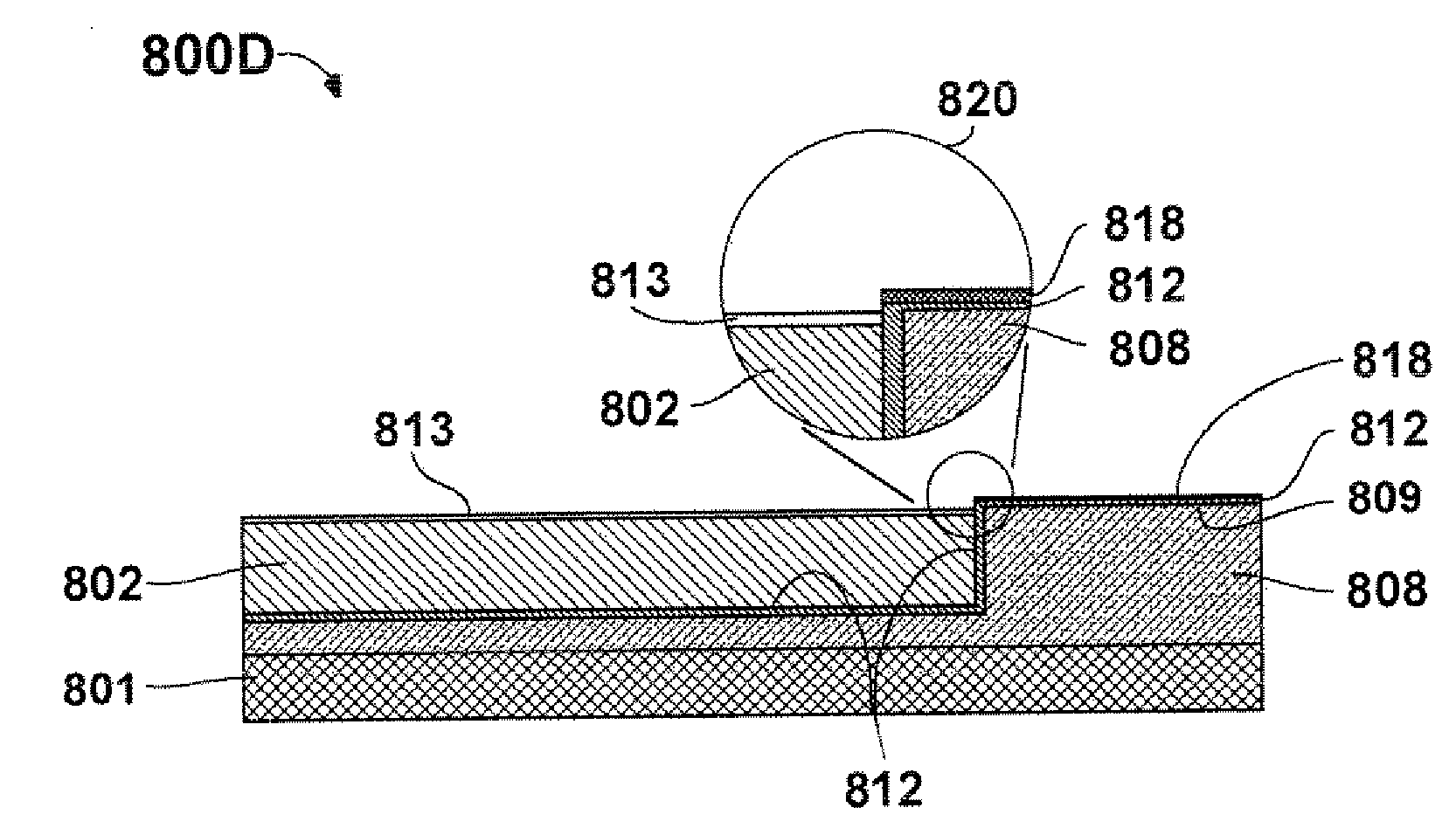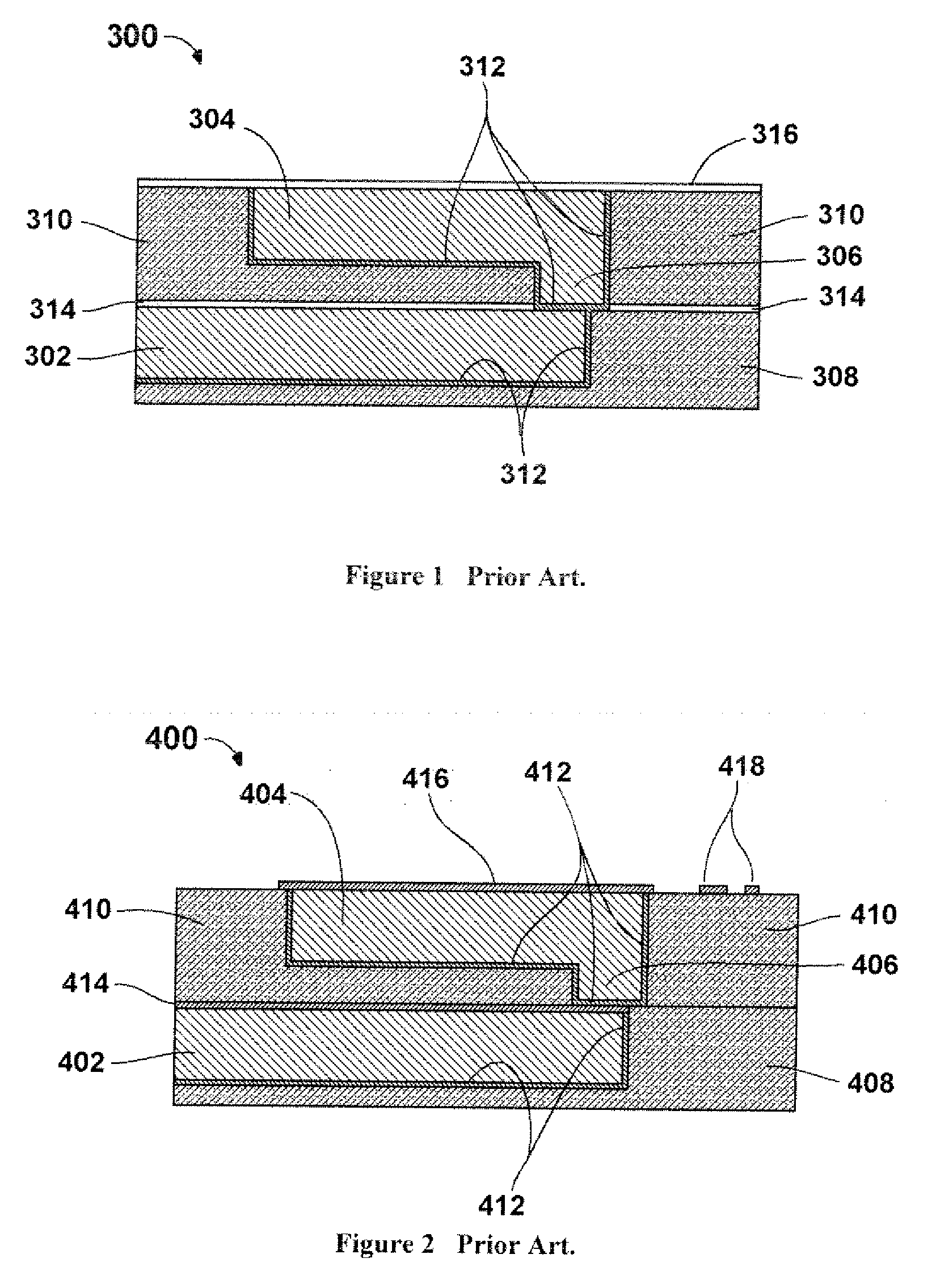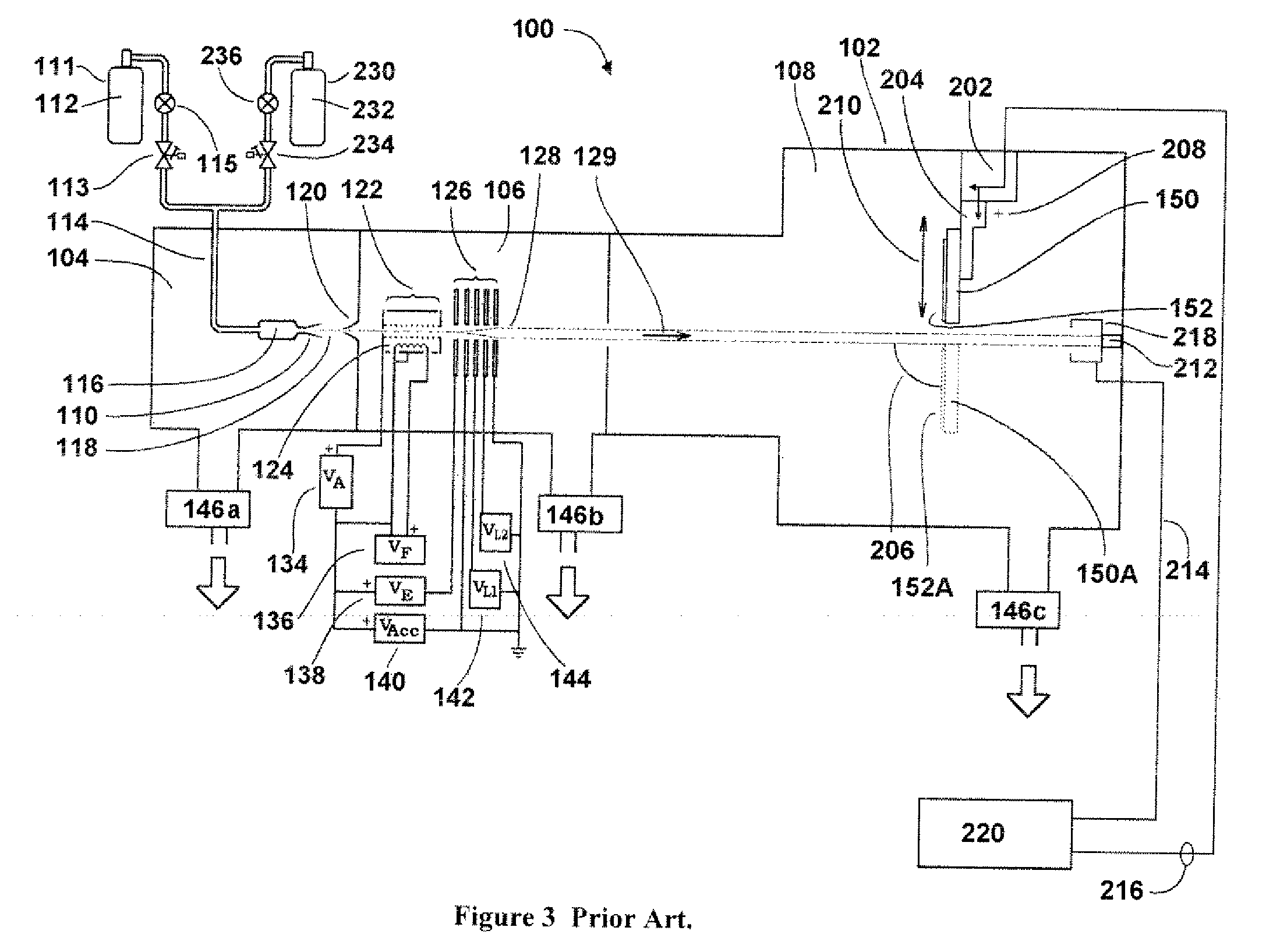Copper Interconnect Wiring and Method and Apparatus for Forming Thereof
a technology of copper interconnect wires and wires, applied in the direction of vacuum evaporation coatings, solid-state devices, coatings, etc., can solve the problems of interconnection wires failing, copper wire surface, and the need to carry ever-higher electrical currents in smaller and smaller sizes
- Summary
- Abstract
- Description
- Claims
- Application Information
AI Technical Summary
Benefits of technology
Problems solved by technology
Method used
Image
Examples
first embodiment
[0046]FIG. 4A is a schematic showing a wiring scheme 500 of a copper interconnect capped using GCIB infusion according to the invention (showing for example, not for limitation, two copper wire layer interconnect levels). The schematic shows a substrate 501 supporting a first copper wire layer 502, a second copper wire layer 504, and copper via structure 506 connecting the two copper layers, each of which may be formed using conventional techniques. The substrate 501 is typically a semiconductor substrate containing active and / or passive elements (possibly including lower interconnect levels) requiring electrical interconnection. The sidewalls and bottoms of both copper wire layers 502 and 504 and the via structure 506 are lined with a TaN / Ta or other conventional barrier layer 512, which may be formed using conventional techniques. First inter-level dielectric layer 508 and second inter-level dielectric layer 510 provide electrical insulation between the copper wire layers and othe...
third embodiment
[0064]FIG. 6A is a schematic showing a wiring scheme 700 of a copper interconnect capped using GCIB infusion according to the invention (showing for example, not for limitation, two copper wire layer interconnect levels). The schematic shows a substrate 701 supporting a first copper wire layer 702, a second copper wire layer 704, and copper via structure 706 connecting the two copper layers, each of which may be formed using conventional techniques. The substrate 701 is typically a semiconductor substrate containing active and / or passive elements (possibly including lower interconnect levels) requiring electrical interconnection. The sidewalls and bottoms of both copper wire layers 702 and 704 and the via structure 706 are lined with a barrier layer 712, which may be formed using conventional techniques. First inter-level dielectric layer 708 and second inter-level dielectric layer 710 provide electrical insulation between copper wires and may be formed using conventional techniques...
fourth embodiment
[0072]FIG. 7A is a schematic showing a wiring scheme 800 of a copper interconnect capped using GCIB infusion according to the invention (showing for example, not for limitation, two copper wire layer interconnect levels). The schematic shows a substrate 801 supporting a first copper wire layer 802, a second copper wire layer 804, and copper via structure 806 connecting the two copper layers, each of which may be formed using conventional techniques. The substrate 801 is typically a semiconductor substrate containing active and / or passive elements (possibly including lower interconnect levels) requiring electrical interconnection. The sidewalls and bottoms of both copper wire layers 802 and 804 and the via structure 806 are lined with a barrier layer 812, which may be formed using conventional techniques. First inter-level dielectric layer 808 and second inter-level dielectric layer 810 provide electrical insulation between copper wires and maybe formed using conventional techniques....
PUM
| Property | Measurement | Unit |
|---|---|---|
| Electric potential / voltage | aaaaa | aaaaa |
| Electric potential / voltage | aaaaa | aaaaa |
| Thickness | aaaaa | aaaaa |
Abstract
Description
Claims
Application Information
 Login to View More
Login to View More - R&D
- Intellectual Property
- Life Sciences
- Materials
- Tech Scout
- Unparalleled Data Quality
- Higher Quality Content
- 60% Fewer Hallucinations
Browse by: Latest US Patents, China's latest patents, Technical Efficacy Thesaurus, Application Domain, Technology Topic, Popular Technical Reports.
© 2025 PatSnap. All rights reserved.Legal|Privacy policy|Modern Slavery Act Transparency Statement|Sitemap|About US| Contact US: help@patsnap.com



